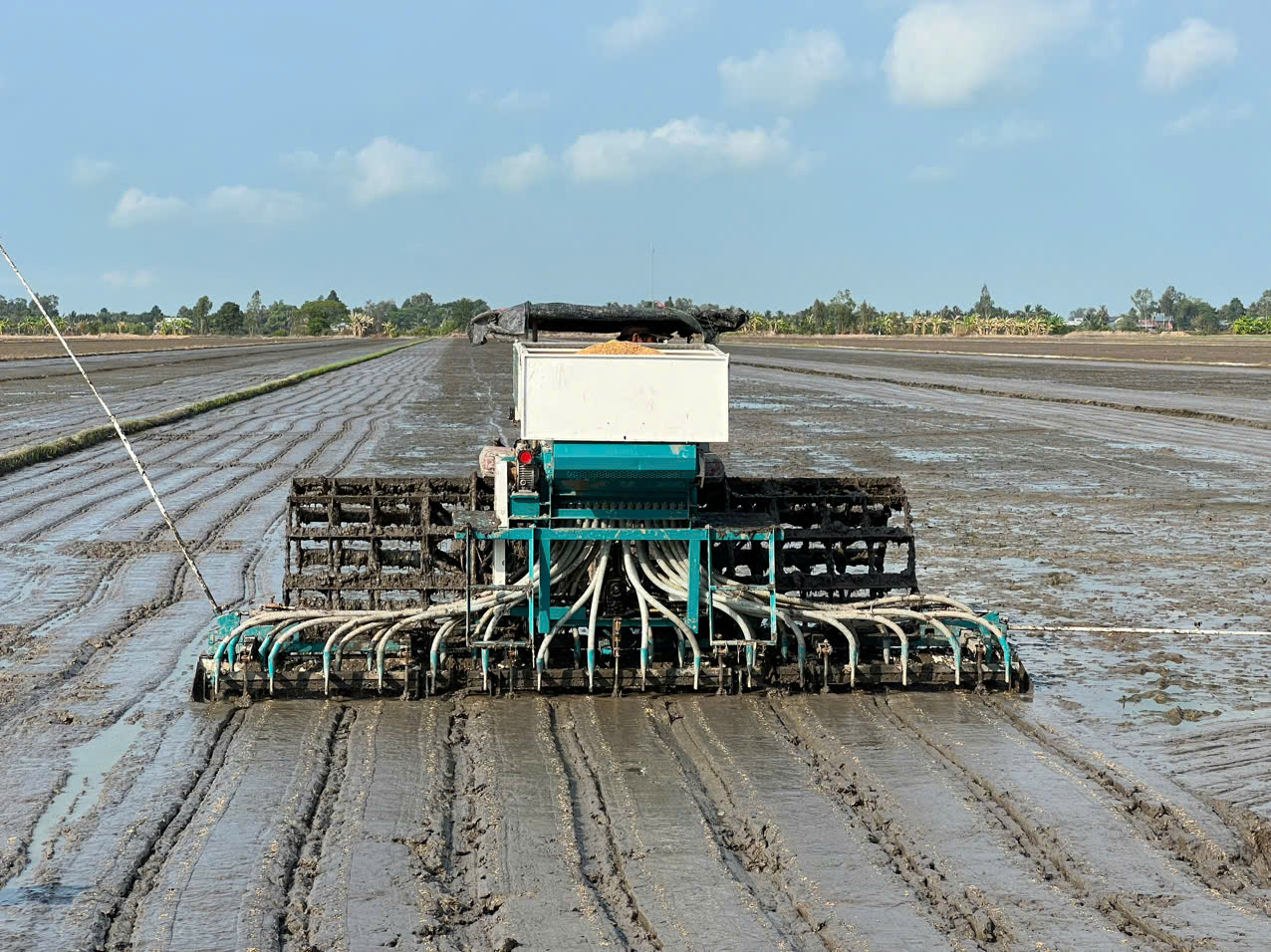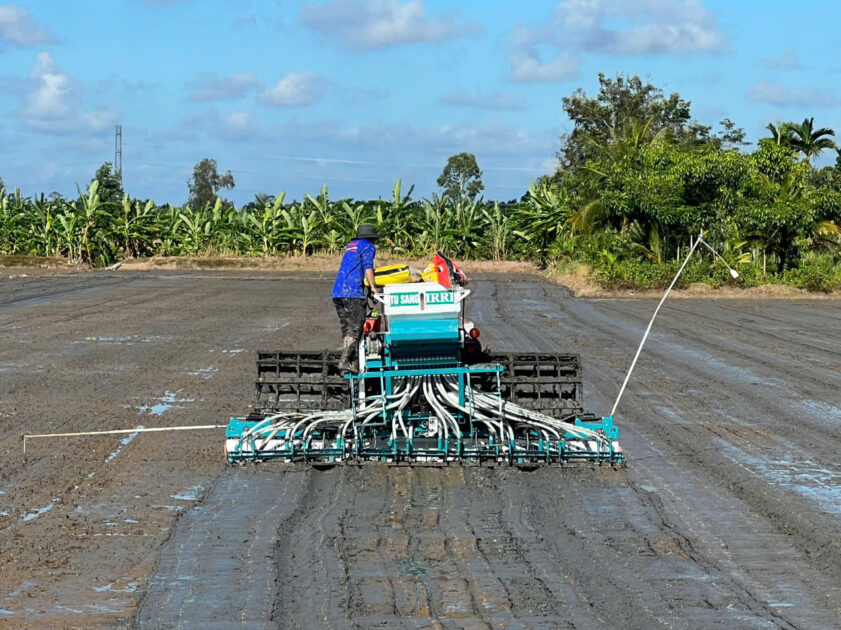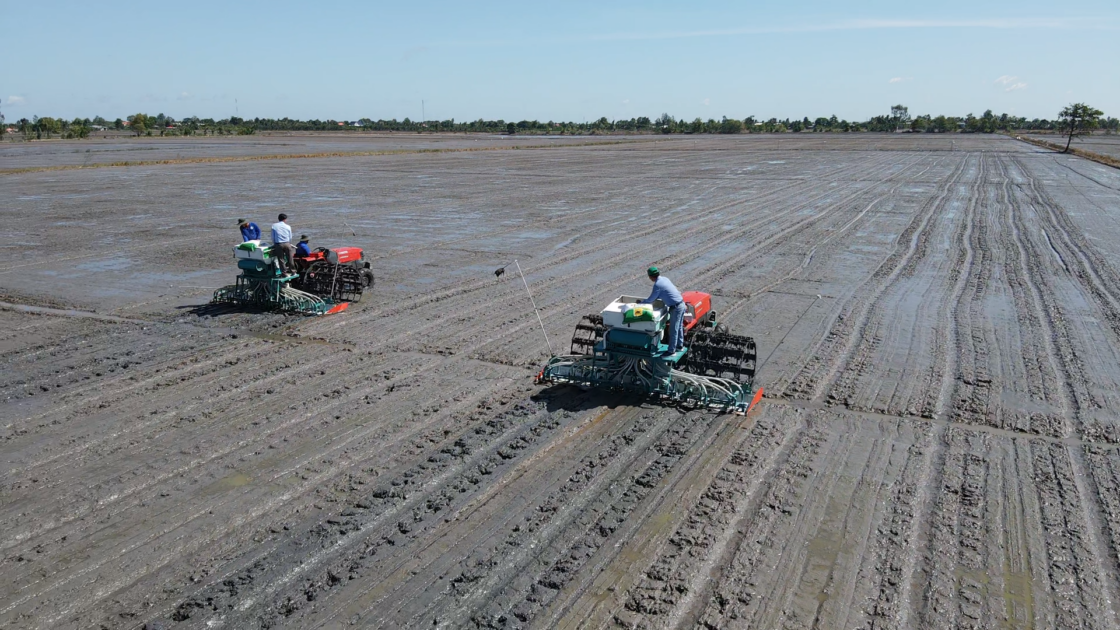Vietnam’s MARD endorses Mechanized Direct Seeding combined with Fertilizer Deep Placement as an advanced technology for rice cultivation
-
From
CGIAR Initiative on Asian Mega-Deltas
-
Published on
23.10.24
- Impact Area

Hanoi, Vietnam (October 8, 2024) – The Ministry of Agriculture and Rural Development-Department of Crop Production (MARD-DCP) has officially recognized the “Technical guidelines on mechanized direct seeding combined with fertilizer deep placement for rice production in the Mekong River Delta” as a technical advancement in crop production.
The guidelines, authored by a team of experts from the International Rice Research Institute (IRRI), Tien Giang University, Cuu Long Rice Research Institute, Tu Sang Company, Can Tho Sub-Department of Crop Production and Plant Protection, and led by Dr. Nguyen Van Hung, IRRI scientist, offer a comprehensive approach to enhancing rice yields and reducing environmental impact in the region.

The technical guidelines promote innovative rice farming practices, such as mechanized direct seeding to reduce labor costs and improve planting efficiency, fertilizer deep placement to enhance nutrient uptake and root growth, and row seeding to improve weed control and water management.
The technical guidelines on mechanized direct row seeding and fertilizer deep placement are divided into two main sections. The first section covers the essential steps for rice cultivation, including land preparation, seed preparation, seeding, and fertilizer application. The second section focuses on the dynamic air-assisted row seeder, a machine designed for efficient and precise seeding. This seeder offers adjustable row spacing, optimal seeding rate associated with fertilizer rate, and optimal seeding and fertilizer depths.

According to Dr. Hung, “the technology as a game changer for optimized rice cultivation with “less inputs, less carbon footprint, and more outputs. Its adoption can generate an additional income at least 10% for rice production, and drive the value chain upgraded, tailored to more sustainable and low emission. The technology is beneficial to all farmers, cooperatives, and rice enterprises in the Mekong River Delta relevant to rice production, service providers, and low carbon rice markets.”
This innovative technique is a key component of the broader technical guidelines on high-quality and low-emission rice production in the Mekong River Delta.

Check the full guidelines here.
This work is part of the CGIAR Initiatives on Excellence in Agronomy and Asian Mega-Deltas.
Related news
-

CGIAR Climate Security team pilots a new research approach for the development of Nature-based Solutions in fragile settings
Ibukun Taiwo27.11.25-
Climate adaptation & mitigation
Responding to complex crises requires new systemic research approaches that help identify entry poin…
Read more -
-

Drones prove their worth in measuring livestock methane in Africa
International Livestock Research Institute (ILRI)26.11.25-
Mitigation
In May 2024, the International Livestock Research Institute (ILRI) and partners shared news of the…
Read more -
-

Pioneer adaptation farmers inspire adoption of climate-smart innovations in Bomet County, Kenya
International Livestock Research Institute (ILRI)24.11.25-
Adaptation
In Bomet County, Kenya, where agricultural traditions run deep, two families and their farms are…
Read more -
